What’s the use of making a great product if the end-users don’t know about it? The same goes for your marketplace as well. And that’s why promoting a marketplace is as important as building one. After all, you won’t get any success if your target audience is unaware of your brand as a marketplace, will you?
So, how to promote your eCommerce marketplace? Well, we’ve prepared this actionable guide to show you exactly that.
Promoting a marketplace is not rocket science, but it’s not easy either.
In this article, we have listed 20+ methods of promoting your eCommerce platform effectively both on online and offline platforms.
Before we start today, let’s get to know about some popular online marketplaces that were also startups once but became world leaders with time.
The Best Marketplaces to Find Inspiration
Every reality was once a dream. The big players we see in the eCommerce world didn’t reach today’s position overnight. Their promotional strategies played a vital role in determining their success. You can also enter their league if the promotion is done right! It’s difficult but not impossible.
If you can not, no worries.
You can still make a profitable business out of the eCommerce marketplace. After all, it is a form of business where the sales figure is estimated to reach $6 trillion by 2024.
Now let’s take inspiration from the following marketplaces that did it right, shall we?
1. Amazon
Amazon is the epitome of the eCommerce marketplaces worldwide. Jeff Bezos founded it in 1994 and initially sold only books. Amazon has now become a world leader by selling books, movies, music, houseware, toys, electronics, and whatnot! Their marketplace is mainly product-based.
Revenue of Amazon as of 2023: $554 billion
2. Airbnb
This is a marketplace where property owners list their homes and rooms for rent, and people find places for short-term stay when they are away from home. Airbnb came to the scene in 2008, and now it is the best of the breed as a marketplace that provides accommodation.
Revenue of Airbnb as of 2023: $8.4 billion
3. Uber
Uber is a ride-sharing marketplace platform that was founded in 2009. It allows car and motorcycle owners to use their rides to commute passengers and get paid. This marketplace became so popular that it expanded its business in the food delivery business as well and became successful.
Revenue of Uber as of 2023: $63 billion
4. Upwork
Upwork is basically a service-based marketplace where people earn money using their skills, talents, and time. Upwork is extremely popular with company owners who are shorthanded or want to save money. It’s the largest talent marketplace for agencies and freelancers.
It was rebranded as Upwork from Elance-oDesk in 2015.
Revenue of Upwork as of 2023: $505 million
5. Just Eat Takeaway
This is one of the leading global food delivery marketplaces that connects consumers and restaurants online. Just Eat Takeaway started its journey in 2000 in the Netherlands. Now it is serving in over 25 countries under different names.
Revenue of Just Eat Takeaway as of 2022: $347 million
These are many forms of eCommerce marketplaces that deal with different products or services. No matter what you offer, you need to promote your marketplace both online and offline to become successful.
How to Promote a Marketplace- 21 Proven Ways for You
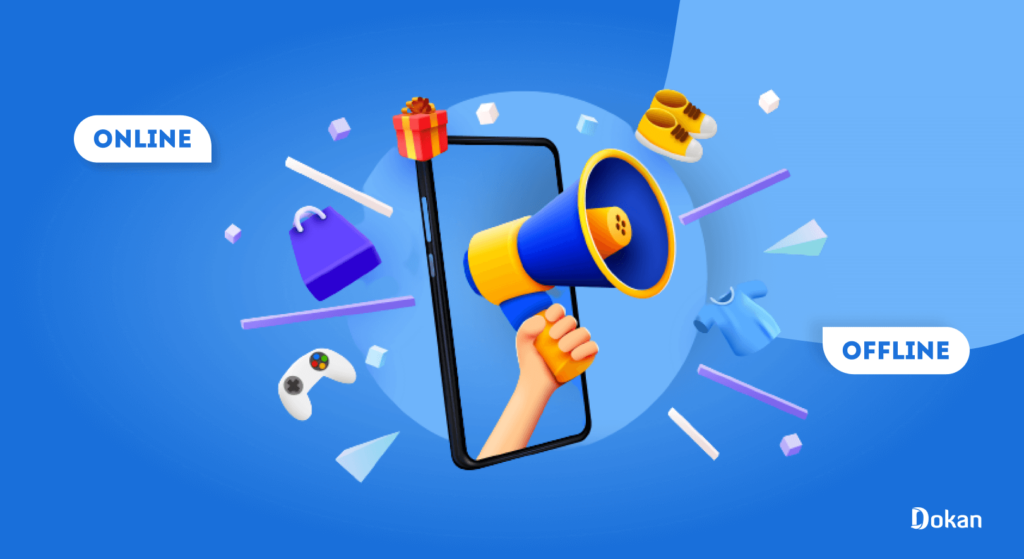
When you know you have come up with a feasible business idea that can solve a specific problem of the target market, then it’s time to promote that and reach the prospects. You should find out people’s pain points and provide solutions to their needs.
We assume that you have an amazing idea and now want to know how to promote a marketplace. If so, you’re at the right place. Gotta keep reading!
Here’s the list of ways to promote a marketplace. First, we are going to share the online ways to promote your eCommerce store:
- Analyze the Promotion Strategies of Your Competitors
- Develop a Plan for Customer Acquisition
- Lookout for Customers Available on Existing Platforms
- Reach out to Buyers Even Before Launch
- Collaborate with Vendors to Run Promotional Campaigns
- Take Advantage of Social Media Marketing
- Focus on Email marketing
- Use Video Content
- Adopt a Mobile-First Approach
- Optimize all Your Content for Search Engines
- Create Killer Landing Pages
- Provide Incentives for Referrals and Testimonials
- Collaborate with Your Vendors for Promotion
- Share Data And Other Insights with Vendors
- Build Partnership with Influencers
- List Your Marketplace in Google My Business
Now let’s check these 5 steps to promote a marketplace offline:
- Use Your Personal Connections
- Sponsor an Event
- Attend Seminars/Webinars/Conferences in Your Field
- Arrange Educational Workshops
- Make Use of the Local Newspapers
Read the section below to get a detailed idea about each of these proven methods.
1. Analyze the Promotion Strategies of Your Competitors
One of the easiest ways to adopt a promotion strategy initially is to analyze the competitors. You will have a primary idea about the right promotion strategies by extracting answers to the following questions.
- How are your competitors attracting customers?
- What is their main source of traffic?
- What platforms do they use to communicate with their customers?
- How strong is their presence in social media?
You don’t have to follow the exact set of strategies as your competitors. You can add or remove questions according to your area of business. But, what competitor analysis will do, is help you determine the best methods suitable for your business.
You can take inspiration from the successful campaigns of the competitors and avoid or modify their failed attempts.
2. Develop a Plan for Customer Acquisition
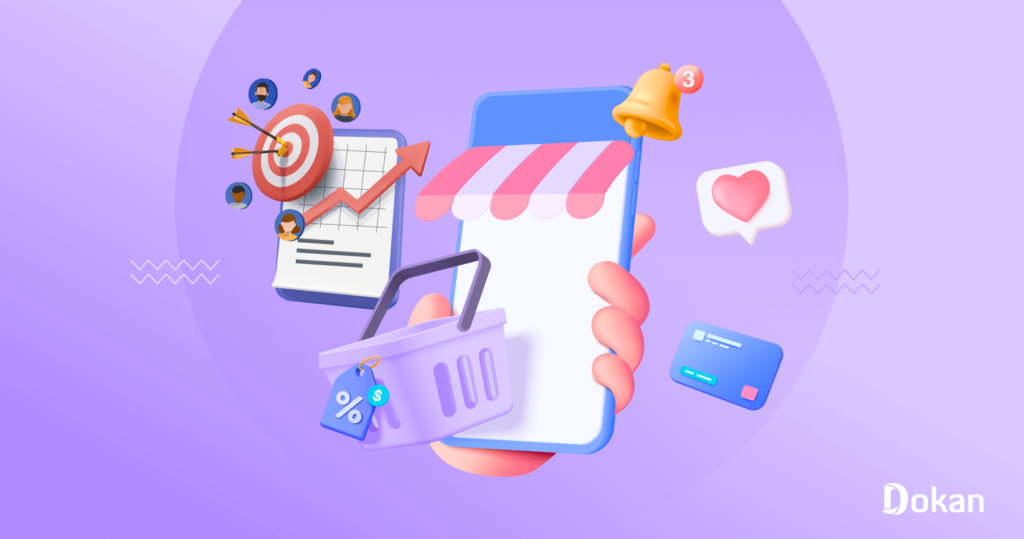
Once you know who your customers are and how your competitors are achieving their business goals by targeting the same customer base, it’s your turn to develop a customer acquisition plan.
Plan out your ways to onboard new customers to your marketplace. Look for a long-term goal so that you can retain the customers who will come through your acquisition strategy.
3. Lookout for Customers Available on Existing Platforms
You should leverage all available resources that cost less money when promoting your marketplace. Find out what sites are popular to your target audience, which Facebook groups they’re in, which forums they browse, and which influencers they follow.
You will get a good number of prospective customers from these existing platforms if you can determine consumer habits and preferences correctly.
Fun fact: Did you know that Airbnb got its first prospective customers from Craigslist?
4. Reach out to Buyers Even Before Launch
From ideation to developing a marketplace, it takes at least a couple of months to become ready. You can sign up buyers in the meantime before launching the marketplace. It’s impractical to expect customers to buy from your marketplace right from the first day.
You can run “coming soon” campaigns both online and offline to inform buyers beforehand about what you’re going to offer.
5. Collaborate with Vendors to Run Promotional Campaigns

Promotional sales and discounts have always been a part of effective marketplace promotion for both new and existing platforms. Some marketplaces continuously run consumer sales promotions that take them a few years to record the first profit.
Even Amazon closed 2003 with a profit for the first time after 10 years of its launch.
You won’t be selling products directly to the customer, your vendors will. So, collaborate with them and mutually agree on discounts and coupon offers. Here’s a list of various sales discounts and deals that you can consider in your promotional strategy for better customer engagement.
- Discounts and Coupons: Price reductions and discounted coupons are very popular with online shoppers. A flat price or a percentage discount can be offered.
- Loyalty Programs: Customer retention is more fruitful than customer acquisition. Customers can be encouraged to come back and buy from your vendors and get special discounts as a reward.
- Rebates: Rebate offers like cashback and ‘buy 1 get 1 free’ are proven to be effective in the eCommerce arena. More customers can be attracted to such alluring offers.
- Raffle Draw: Many marketplaces partner with different brands and sell vouchers at a fixed price and lucky winners get products pricier than the monetary value of the voucher. This is another way of consumer sales promotional sales.
- Contest: Running a contest is a more interactive way of sales promotion. The marketplace platform usually asks a question via their website, social media handles, video content, and more and invites the audience to answer. And the lucky winners get something for free as contest winners.
You don’t have to blindly follow any of these ideas. As a marketplace owner, you can modify these offers or invent something new tailored to your business requirements.
6. Take Advantage of Social Media Marketing
According to a survey, 72% of online consumers in the US used social media to find new products from online stores. This number speaks of the importance of social media marketing when promoting an eCommerce platform. How to promote a marketplace using social media marketing (SMM)? Check the following steps.
- Collect information about the target customers: Find out what interests your target audience and what they expect from you. This information comes in handy to run advertising campaigns and write high-performing sales copies.
- Create official Facebook, Instagram, Twitter, etc., accounts: You must have a strong presence across all social media platforms, including YouTube, TikTok, and LinkedIn. Maintain brand consistency by using the same logo, color palette, and font on all social media handles to create a sense of authenticity.
- Run advertisements and boost posts: While organic likes, comments and shares are always welcome, you need to sponsor posts and run advertisements to reach a wider range of audiences. There might be thousands of potential customers who are interested in what you’re selling but only a few of them know about you. You can reach them through paid campaigns.
Another great way to attract customers is to publish viral content. One viral post can drive thousands of prospective customers to your marketplace. But, never mislead consumers with any content to increase your revenue. Misleading and poor content can harm your brand value in the long run.
Also Read: The Right Ways to Utilize Quora for Marketing
7. Focus on Email marketing
Email marketing is still the most effective method of direct response marketing. The average ROI of email marketing amounts to a whopping 4200%. Email marketing is 40% better than Facebook and Twitter marketing when it comes to conversion. So, you can’t ignore email marketing when promoting your marketplace.
The first challenge of email marketing is to gather leads with buying intentions. You can collect leads by providing forms through landing pages and using other lead magnets. Once you have the leads, segment them based on their demographics, create buyer personas, and send personalized emails to generate more sales.
Don’t send only sales-related emails to your target customers. Keep them updated about your business, inform them about new product launches, and send periodic newsletters.
You can craft useful blogs with authentic information as email newsletters. A well-thought newsletter helps build a trustworthy relationship between the customer and the marketplace.
It’s better to create a plan ahead of time. Here’s a step-by-step guide to crafting an engaging newsletter.
- Choose a specific day or an event that has the potential for sales generation
- Keep your newsletters updated based on current trends
- Send your best piece of content like newsletters
- Use pictures, videos, and other multimedia files to make it aesthetically pleasing
Delete unsubscribed and inactive email recipients regularly. Build a strong relationship with the customers, then subtly drive them to the sales funnel and nudge them to buy.
Also Check: Grow Your Audience By Adding Email Subscriptions to WordPress Blog
8. Use Video Content
You can convey a 300-word long message easily through a 30-second video. The overall global attention span is narrowing down, and most people prefer watching a short video over reading a long text. That’s why the demand for video content is growing.
Now the question arises. How to promote a marketplace with video content? Just adhere to the following basic rules.
- Hook your audience within the first few seconds
- Avoid making long videos unless it’s necessary
- Keep the video lively, dynamic, precise, and concise
- Add subtitles if the video contains a voiceover
- Follow SEO best practices when making a video
You can use video content exclusively on YouTube and TikTok. Posting videos on other social media accounts and your marketplace’s website is also an effective way of promotion. Keep in mind to modify and edit the video as per the requirements customized to different social media platforms.
9. Adopt a Mobile-First Approach
According to data, 65% of overall eCommerce traffic comes from mobile devices. It has become mandatory for every marketplace owner to adopt a mobile-first approach when developing and designing a website. Having a mobile app is considered an added advantage.
Make sure all web pages of your marketplace are mobile-friendly, responsive, and functional. A bad user experience will cause you to lose a lot of customers since more than 50% of online shoppers buy via their cell phones.
10. Optimize all Your Content for Search Engines
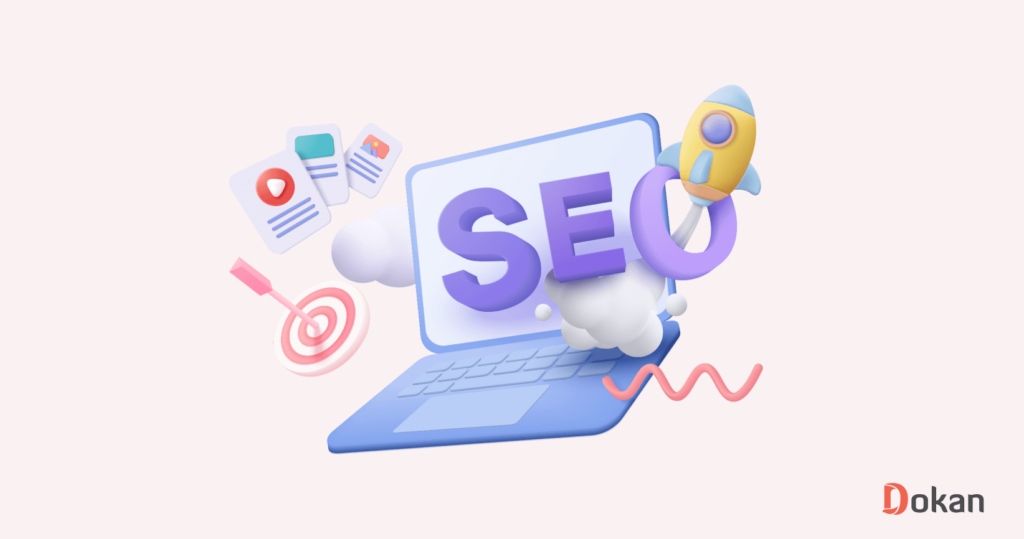
You don’t have an alternative to search engine optimization (SEO) when aiming to reach your target audience organically. All your content across the marketplace’s website should align with the best SEO practices.
You should write content by targeting people who are looking for what you offer. People usually search for things on Google. So, ranking your content on Google should be your first priority. Know more from here:
Also Read: Ecommerce SEO: The Ultimate Guide for Startups
11. Create Killer Landing Pages
Chances are high that your customer will enter your marketplace through any of your landing pages. So, it has to be engaging and lead the user to conversion. Landing pages are usually sales-focused, so copywriting should be on point devoid of unnecessary text.
A visually appealing landing page equipped with to the point and enticing copy can help you in many ways. You can collect data on your target audience when they fill-up the form attached to the landing page.
This data comes in handy while sending emails, analyzing customer behavior, and understanding your customers better. A marketplace usually features the following types of landing pages.
- Squeeze Page: Squeeze pages are mainly opt-in pages that aim to extract information from visitors. These pieces of information typically comprise personal data including name, email, phone number, occupation, etc. You can offer a free trial, downloadable ebook, podcast, infographic, and so on via a squeeze landing page.
- Click-through Landing Page: Click-through landing pages focus mainly on warming up the leads and converting them to customers. These pages are concise and precise with persuasive words. They explain why a visitor should buy from you. The elements of a click-through landing page are a catchy headline, a list of key benefits, engaging visuals, and a CTA button.
- Product Page: Every online marketplace has several product landing pages that feature products from the vendors. These pages have all relevant information about the featured product or service. A product page usually contains multiple images of the product, its key features, user reviews, and multiple CTA buttons like Add to Wishlist, Buy Now, Add to Cart, and more.
Related: Adding Essential Pages & Features to Your eCommerce Website
12. Provide Incentives for Referrals and Testimonials
Referral marketing plays a significant role in online marketplace promotion. People tend to trust their friends and acquaintances more than a catch copy, slogan, or product description written by the sellers. You can take advantage of referral programs by offering discounts for the referrer when the referred customer makes a purchase.
Standard practice is to offer discounts for both the referrer and the referred customer.
According to Trustpilot, almost nine out of ten (89%) online shoppers have the tendency to check online reviews before making a buying decision.
You can attract verified buyers to post testimonials or reviews about your products and services and offer them discounts on their next purchases. A handful of good reviews can increase your sales to a great extent.
13. Collaborate with Your Vendors for Promotion
Your marketplace will surely have products from third-party vendors. If the vendors can sell their products only then both of you (marketplace owner and seller) can make a profit. So, the promotion of the marketplace should be a collaborative effort from both sides.
Partner with your online multivendors. Share promotional content and helpful content/blog through their marketing channels. This way you will be able to generate huge traffic and generate sales with the help of the vendors.
14. Share Data And Other Insights with Vendors

As a marketplace owner, you will have full access to the database. Share these data and other eCommerce business insights with the partner vendors.
Vendors can prepare better promotional strategies once they are aware of the shopping behavior of the customers. Data sharing will eventually result in more sales.
15. Build Partnerships with Influencers
Reach out to influencers who your target audience likes and respects. They might be renowned athletes, successful entrepreneurs, popular models, actors, singers, some local heroes, and more.
You can partner up with micro-influencers to build a budget-friendly promotion strategy. They have small but loyal followings who are more likely to convert into customers.
The global influencer marketing market size has more than doubled since 2019. In 2021, the market was valued at a record 13.8 billion U.S. dollars.
Statista
16. List Your Marketplace in Google My Business
The first thing people do when they hear about a new business is to search it on Google. It will leave a bad impression on the searchers’ minds If your business doesn’t have an existence in Google Maps as well as on local search results.
Create proper business directories including contact number, email, website, and physical location (if any). Getting your business listed on Google My Business can enhance your brand visibility.
You can also try the following offline marketing methods to promote your marketplace.
17. Use Your Personal Connections
It becomes difficult to promote a brand-new business without the help of our surroundings. Ask your friends, colleagues, family members, and acquaintances for referrals. You can arrange special deals for them in return.
If your marketplace offers quality products with secure payment methods, your personal network will surely join the promotion.
18. Sponsor an Event
As a marketplace owner, you need to give something back to the community. Look for opportunities where you can put your brand’s name with other reputable businesses in the locality. Thus, customers will start to build trust with you.
Sponsor events that have the potential to bring the best possible return on your investment. Besides, sponsorship events are a great place for networking. You may find your business allies there.
19. Attend Seminars/Webinars/Conferences in Your Field
Your presence in popular seminars or webinars can play a great role in promoting your business. Side by side, you will be able to develop deeper insights into the business and build new connections with the attendees. Here are 5 reasons you should attend a seminar or conference.
- Seminars come with a lot of educational opportunities
- They help improve your networking skills
- You may get introduced to new suppliers or vendors
- More conferences to your name can position you as an industry expert
- You can be a part of the community that combines both business and social work
20. Arrange Educational Workshops

While education helps people learn many things, it can also be used as an effective marketing tool. You can promote your marketplace by arranging educational workshops and inviting industry professionals to teach the people who sign up for the program.
Thus, you can create an educational ecosystem that benefits the learners and makes everyone aware of your marketplace.
21. Make Use of the Local Newspapers
While most of the promotional activities happen online nowadays, offline marketing still has relevance. The most cost-effective way of offline promotion is using popular local newspapers. You can publish advertisements on the web version of the newspaper as well.
Besides, newspaper ads help improve the brand value of a company. So, let customers know about your marketplace through local or national newspapers.

How to Promote a Marketplace- Ending Note
From knowing about your marketplace to buying from it, this whole customer journey is determined by your promotion strategies. You need to create a well-thought sales funnel to generate expected sales from a promotional plan.
Your promotional strategy should start with competitor analysis followed by the development of a concrete customer acquisition plan. Then look for the vendors who might be interested in selling on your marketplace.
Collaborate with vendors to run promotional campaigns with special deals and discounts. Make use of all available marketing channels including social media, website, paid advertising, and more.
You can also adopt offline marketing strategies like circulating advertisements in local newspapers, sponsoring events, attending seminars, arranging educational workshops, and more. The best promotional strategies comprise both online and offline campaigns.
More and more marketplaces are coming to the scene each year. You can follow this article to come up with excellent promotional strategies to fight this cutthroat competition. All the best!
Subscribe to
Dokan blog
We send weekly newsletters, no spam for sure!

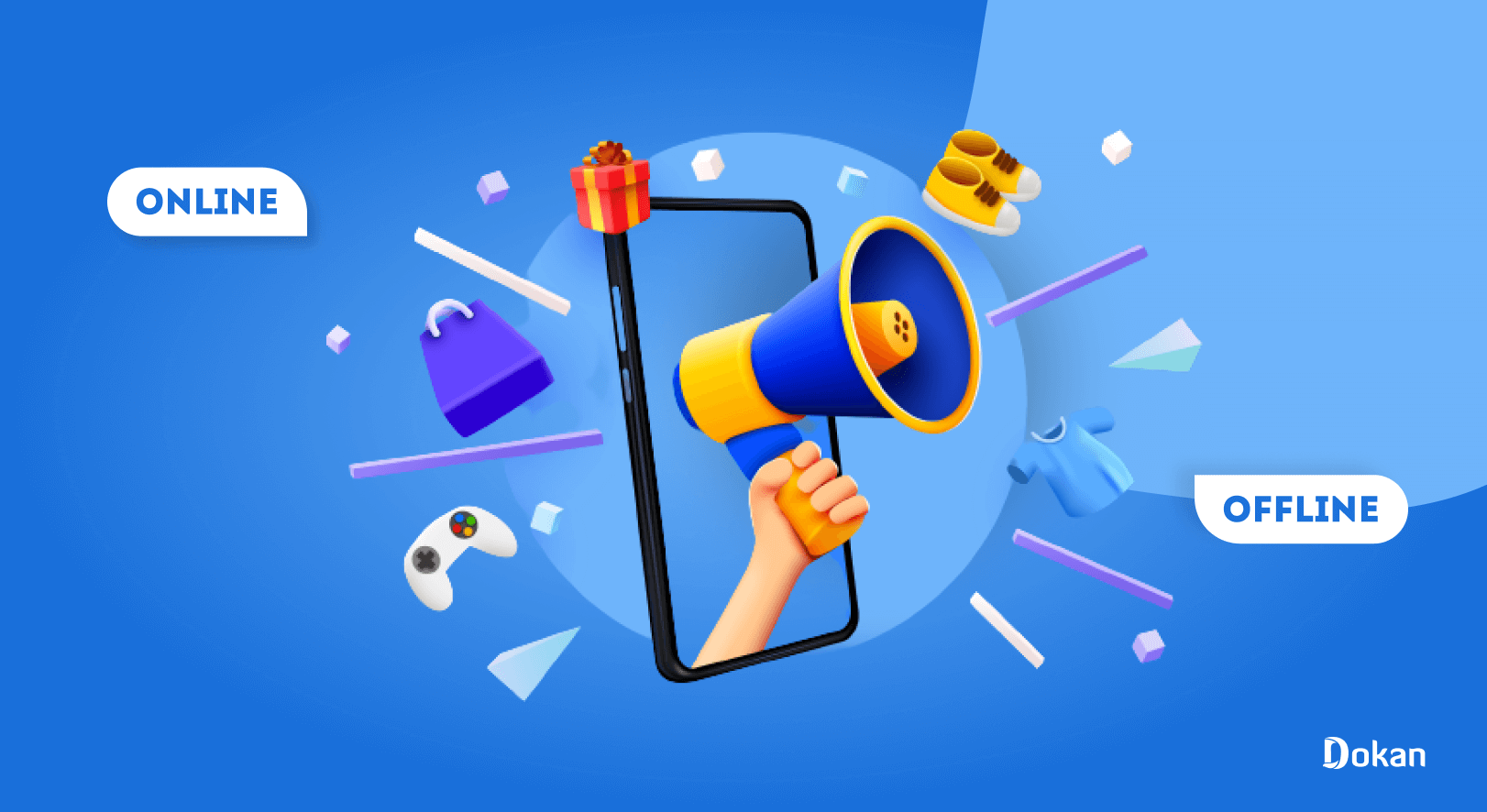
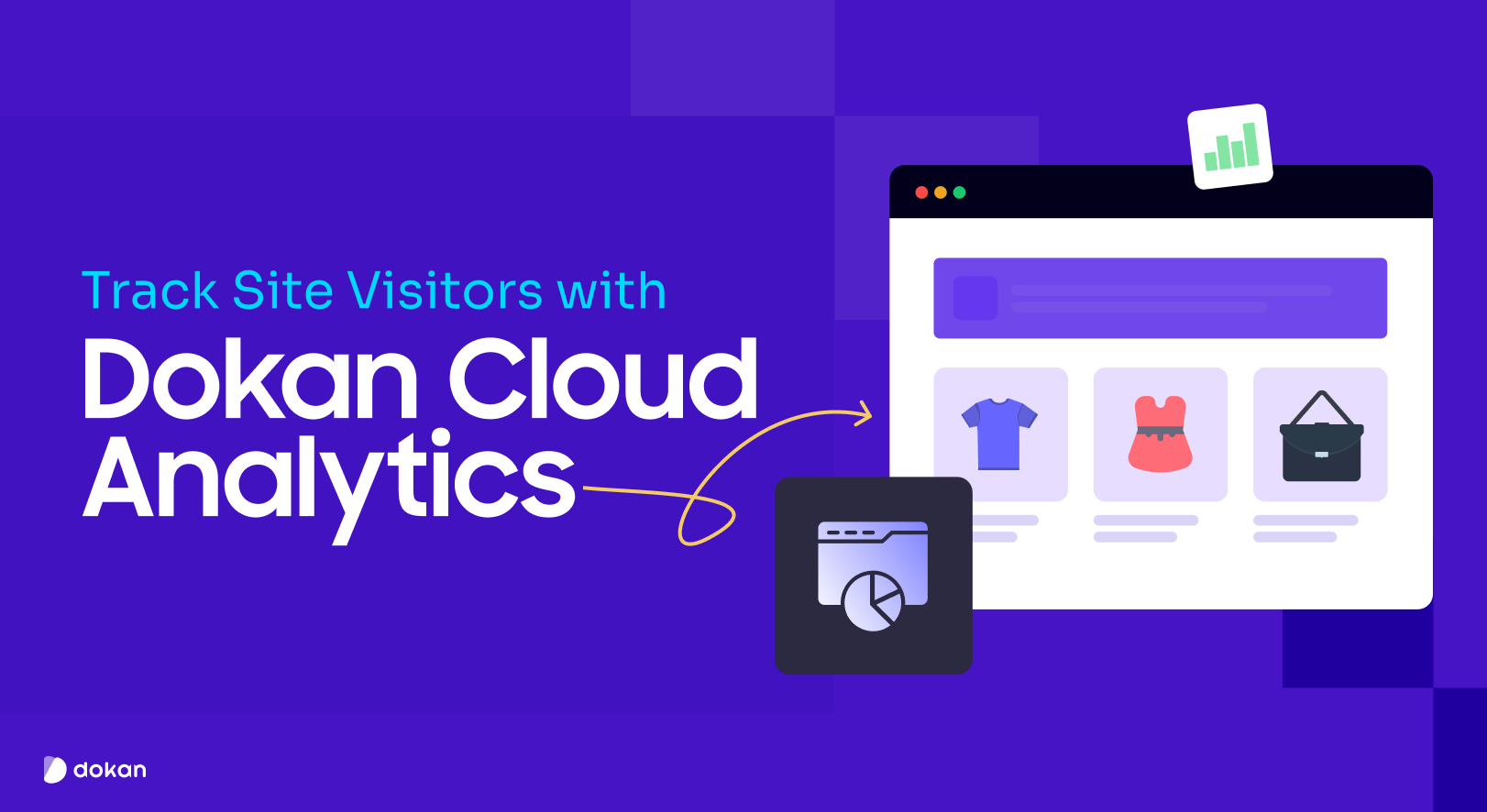

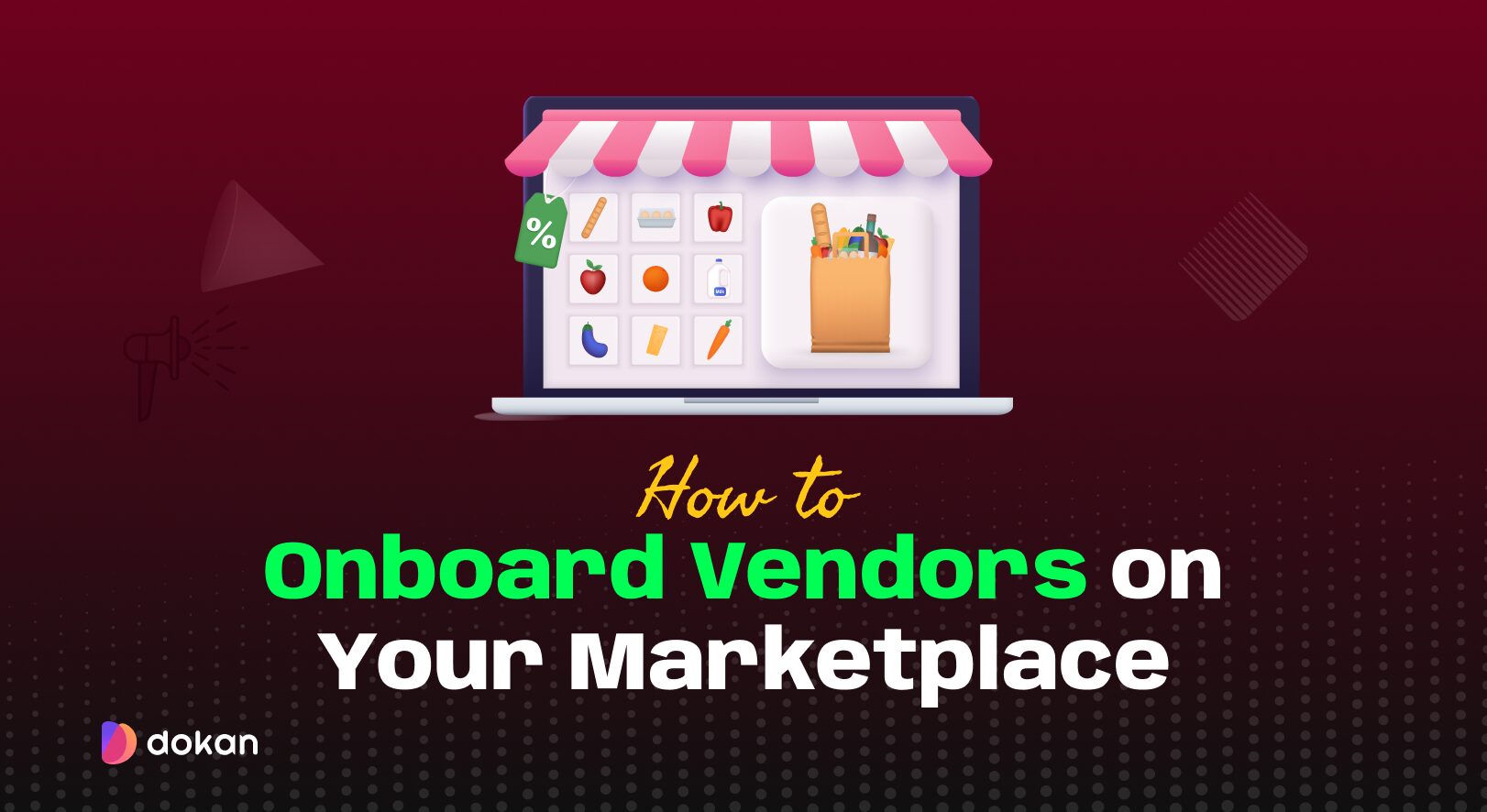
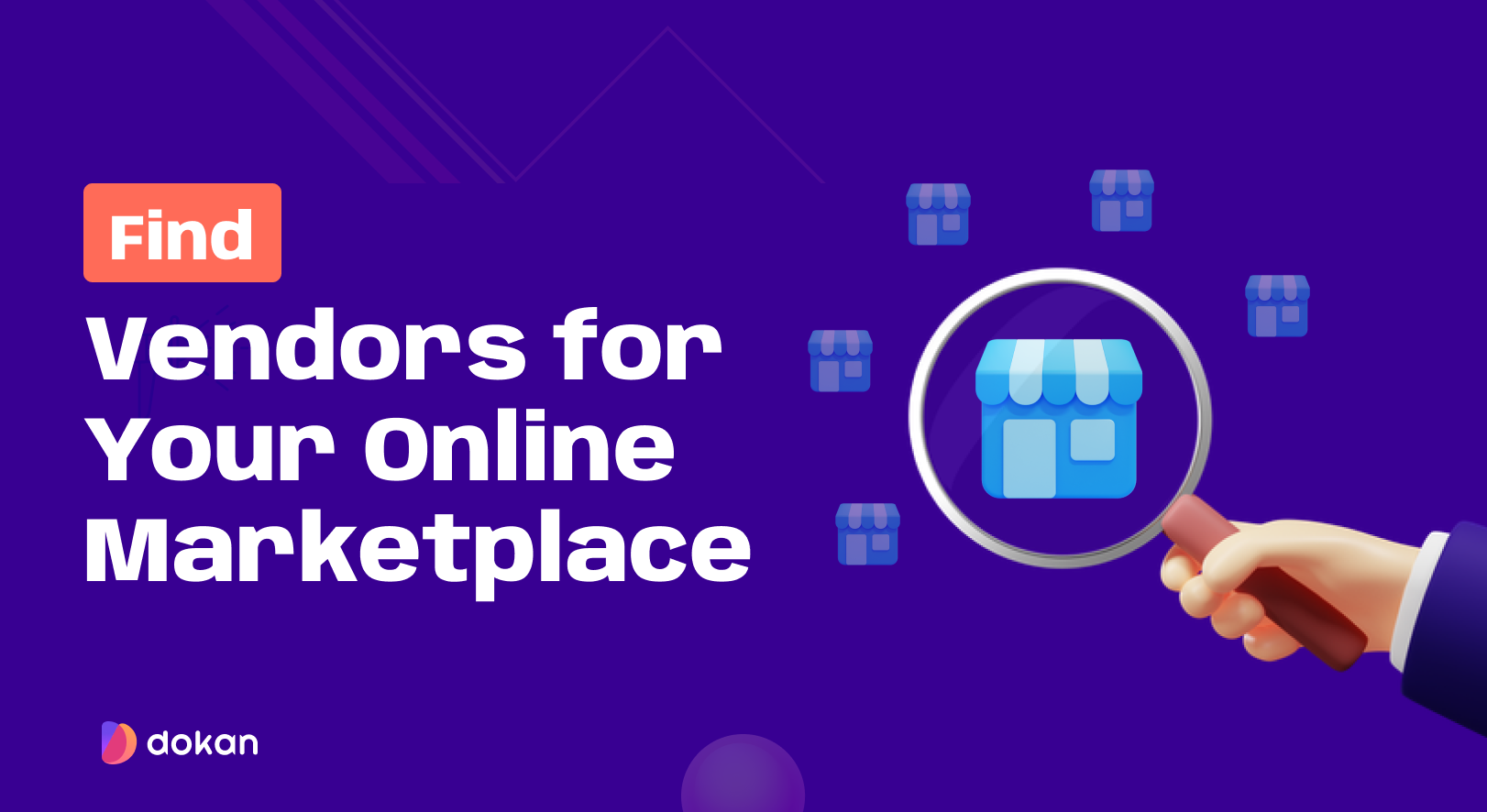

Leave a Reply